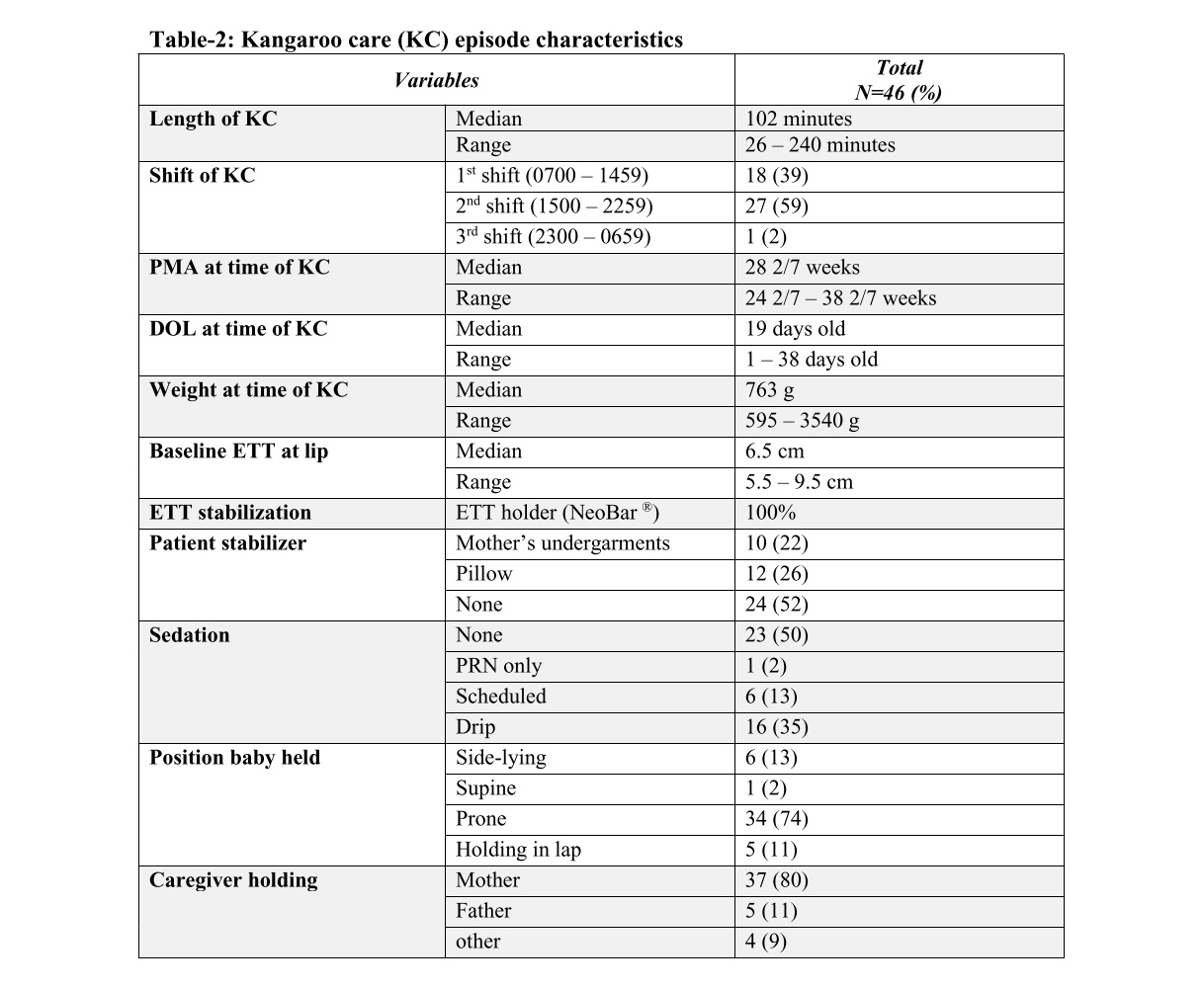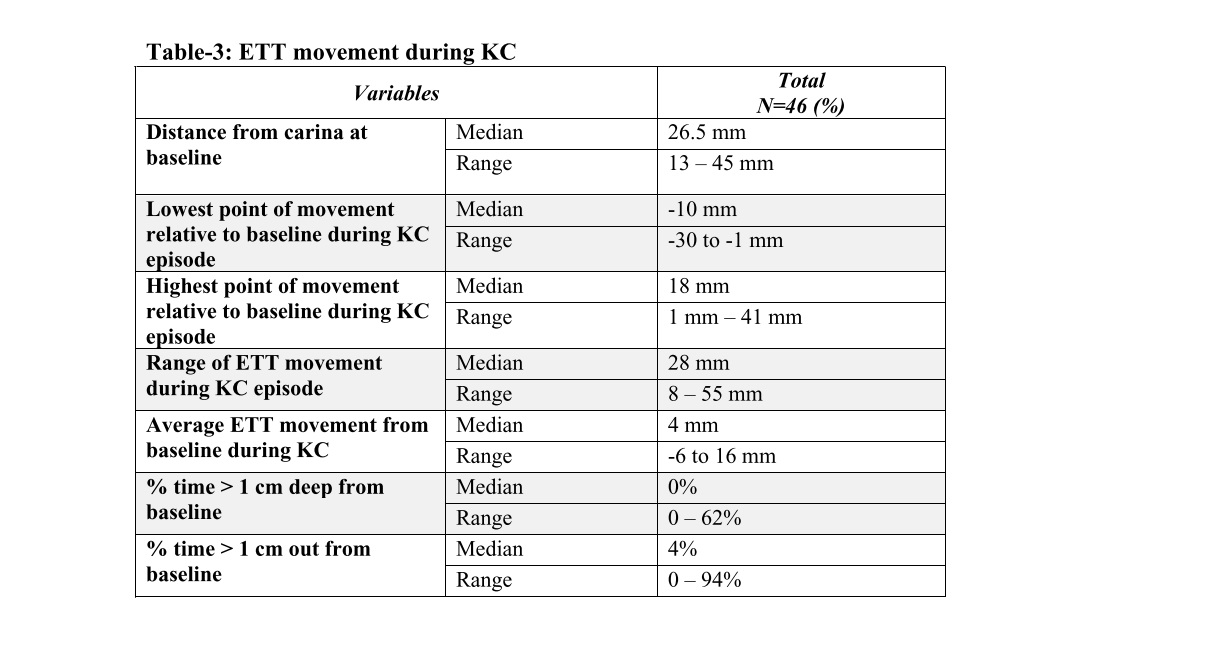Neonatology
Session: Neonatal-Perinatal Health Care Delivery: Practices and Procedures 1
445 - Real-time monitoring of endotracheal tube movement during kangaroo care
Monday, May 6, 2024
9:30 AM - 11:30 AM ET
Poster Number: 445
Publication Number: 445.2803
Publication Number: 445.2803
- KA
Khalid Al Katranji, MD (he/him/his)
Neonatal Fellow
OSF Healthcare Children's Hospital of Illinois
Peoria, Illinois, United States
Presenting Author(s)
Background: Skin-to-skin care or kangaroo care (KC), is a safe and low-cost intervention that places the infant and parent in direct skin-to-skin contact. Neonates undergoing KC for longer periods of time have demonstrated a greater improvement in oxygen saturation and neurobehavioral performance. Among intubated neonates, there is a greater risk of unplanned extubation during KC presumably due to endotracheal tube (ETT) movement. SonarMed™ airway monitoring system utilizes real-time monitoring of the endotracheal tube (RTM-ETT) through echolocation can provide information on internal ETT position.
Objective: The goal of the study was to obtain baseline information about internal ETT movement during KC utilizing SonarMed™. We hypothesized that there is a wide range of ETT movement during KC which may increase in longer durations of KC.
Design/Methods: This prospective observational study was IRB approved and included consented neonates admitted to a level IV NICU requiring invasive ventilation with a KC episode and SonarMed™ in place between June to September 2023. Pearson Correlation and independent-samples median test were performed to analyze relationships between ETT movement during KC with multiple patient and positioning variables.
Results: Forty-six KC episodes from a total of 11 neonates were recorded. Included neonates were born between 23 0/7 weeks and 37 2/7 weeks with a PMA ranging from 24 2/7 weeks and 38 2/7 weeks at the time of KC as demonstrated in Tables 1 and 2. Half of the patients were on some form of sedation at the time of the KC episode and most patients (74%) were held by their mothers and in a prone position. ETT moved a median of 28 mm during the KC episodes with a range of 8 to 55 mm and typically moved away from the carina vs deeper positioning. Some patients were noted to spend most of the KC episode with their ETT moved out > 1 cm as can be seen in Table 3. There was no significant relationship between movement of ETT during KC and any of the above variables.
Conclusion(s): ETT moved significantly during KC with a median range of 28 mm and average movement was noted to be outward from the carina even though ETT measurement at the lip remained unchanged. There was a large amount of variation in movement even between individual KC episodes in the same patient. These patients were at high risk of unplanned extubation during KC even in a setting where a continuous monitor was in place and readily available for parents and staff to visualize and respond to ETT movement. Future studies would be helpful to determine interventions to decrease this movement during KC.



